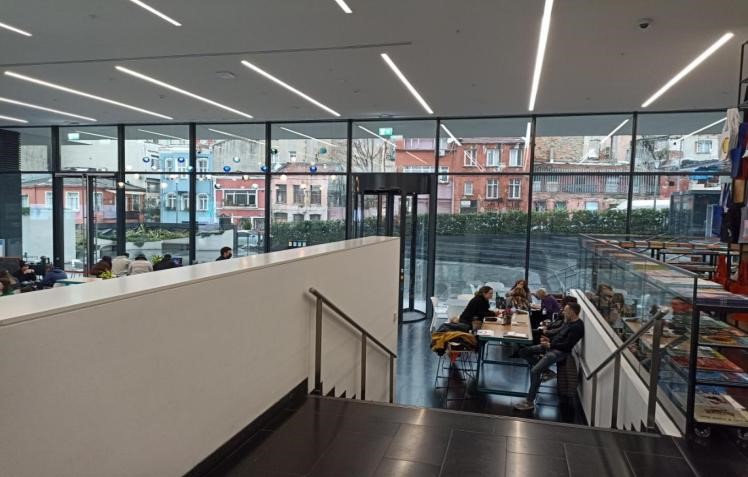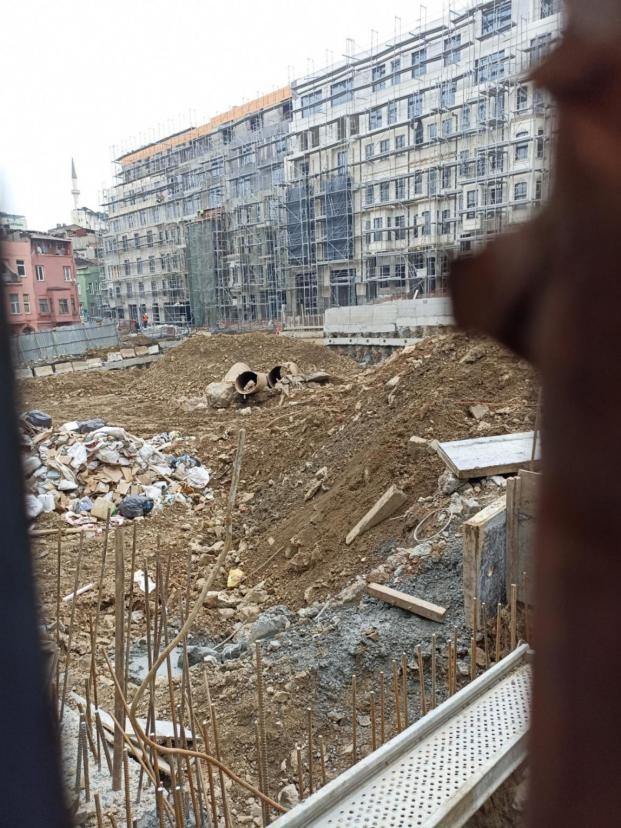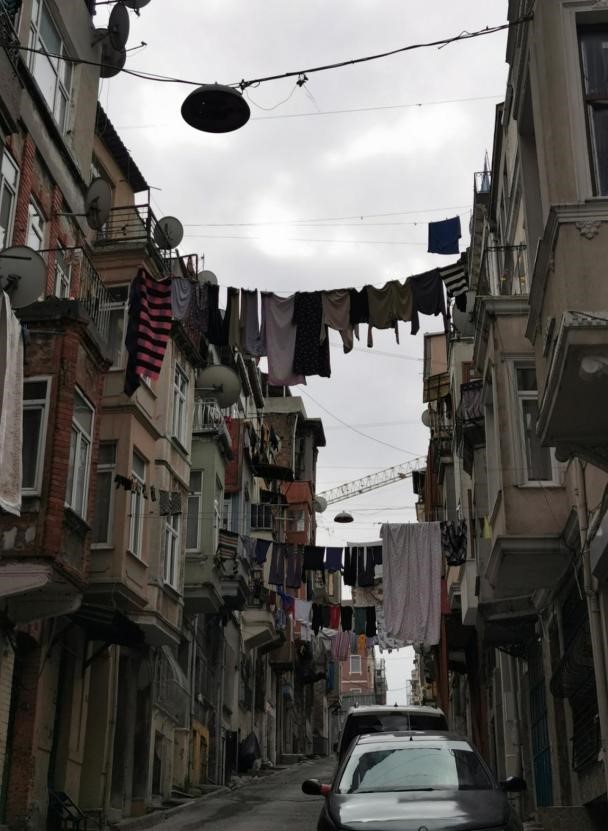İlim ve Medeniyet
Yeni Nesil Sosyal Bilimler Platformu
I went to Dolapdere between 10:00 and 15:00 on Tuesday, March 22. During my visit, my route was as follows: I walked around the back the streets, participated in a platform where the problems of the people were listened to in Beyoğlu Belediye Meclisi, visited the women's Quran course located right next to the building, walked and observed along Irmak Street, visited an elementary school and had a long meeting with the head of school. Then talked an owner of esnaf lokantası while eating something. Lastly, I went to Arter and spent about an hour and a half here. Then I left the field via Taksim.
As soon as I started wandering the back streets of Dolapdere, I realized that the people who live here were in the lower class in the direction we were talking about. I heard machine noises on the lower floors of abandoned and worn-out buildings. I came across the kind of workshops we call "Merdiven altı". Based on the laundry hung all over the street, I came to the conclusion that there was a large population of babies and children. I ran into a big construction site. At this point, the idea that Dolapdere was part of the "created urban city" became apparent in my mind. Also, I noticed that some of the streets have safety cameras. People had different attitudes towards strangers(it may be about our examination through streets). When we asked about the price of a nearly demolished building of 40 square meters, we found out that it was one million two hundred Turkish liras. I understand Dolapdere was a neighbourhood in the process of being transformed into a created identity. I was attracted by the chain stores close to the streets and the shops opened for visa processing. When I approached Irmak Avenue, I felt something different before I got to the street. It was as if a hand wanted to create an artificial basis to change the locality(consisting of different ethnic groups) of Dolapdere. We attended the meeting of the head of Dolapdere neighbourhood, other neighbourhood mayors and people in the neighbourhood Beyoglu Halk Meclisi, which was convened every Tuesday between 11.00 and 13.00. Most of the people we talked to were people who'd lived in this neighbourhood for over 20 years. When the head of the neighbourhood(muhtar) talked about diversity, he said that people have preferred to go to cheaper places in the last 5-6 years because of rising rents. Here, displacement was at the forefront. The head of neighborhood said high-class people bought property there and turned it into a hotel. He said drug dealing and muggings were declining and the area's policing had been stronger in recent years. He mentioned civil safety. When we talked about Arter and other art galleries, he said he hadn't visited. At this point, I realized that many of the people we spoke to knew Arter only by name, that this place did not have any effect and importance to them. The middle-aged women we spoke to at the Koran course (among them those who have lived in Dolapdere for 33 years) said they loved their neighborhoods and had neighbors from Japanese, Syrian, Russian and other ethnic groups. We found out that they had no problem with policing and also had no knowledge of Arter.
When I started walking along Irmak Avenue, gentrification began to manifest itself. Constructions, chain grocery stores and other stimulants formed the minimal part of gentrification, while art workshops and figures in some shops were the subjects of the sharp transition between Dolapdere locals and the elite. We went to an elementary school on Irmak Avenue. We had a long conversation with the Head of the school. He mentioned that students who have problems economically are in constant circulation. He said the students moved all the time. The head of the school said most of the school's population is made up of children of Mardin and Southeast descent, mothers have low literacy rates and 180 of the 800 students are Syrians. One of the things that interested me was that the school was in cooperation with Arter and that the student groups had visited Arter. According to M.Ç., Arter officials are very interested in students and allow them to spend time in art workshops.
When we left school and went to eat at an esnaf lokantası across the street from Arter, I was surprised that the restaurant owner said there was an increase in customers thanks to Arter's strong influence. During our meal, I observed middle-class people who were mostly students.
Finally, when we entered Arter, the existence of a class that was being created in Dolapdere was quite striking to me. While the high-level security measures, the polite and attentive behaviour of the Arter employees made me feel special, my mind shifted across the street. The Dolapdere neighbourhood was completely isolated from this world, which Arter included one of its "own".
Especially the books in the gallery's library and the cafe indicated that the new class created in Dolapdere was included in the world created by familiar objects. On the one hand, I thought of the woman hanging up the laundry on the back street, and on the other hand, I noticed a woman sipping her coffee at the Divan. At this point, art seemed to me to be a tool that saw Dolapdere's culture, existence and settlement as a threat.
Betül Şeker




Yorum Yaz